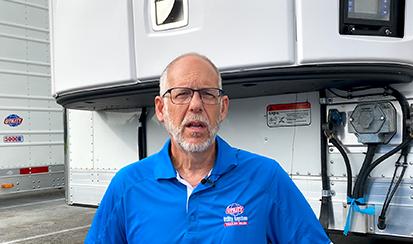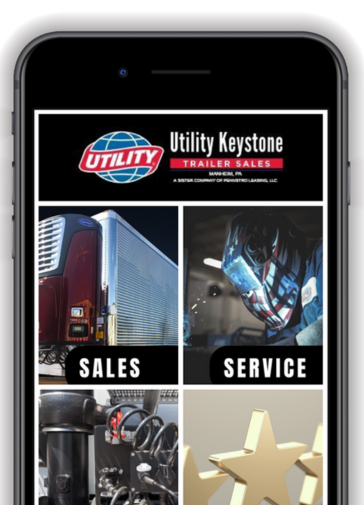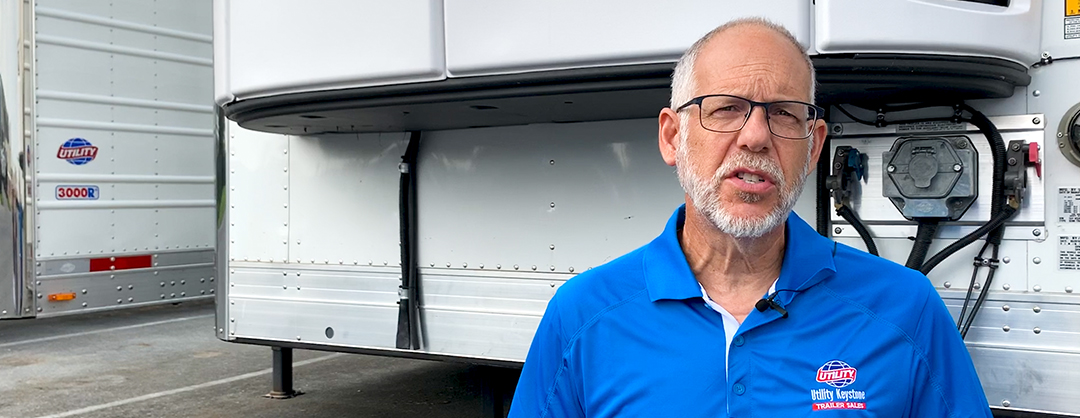Temperature Ranges and Zones in Multi-Temp Trailer
Winning the Battle between Mother Nature and Your Multi-Temp Trailer
This is the reason you’re buying a multi-temp trailer. Controlling temperatures at different ranges in zones in multi-temp trailers can be more challenging than it might seem.
If you have experience with single-temp trailers, you understand the battle between mother nature, ambient temperature, and your products’ temperature.
Read: “How to Buy the Best Reefer Trailer”
Temperature Ranges and Control on Multi-Temp Trailers
The critical factor in the design is the ability to maintain proper airflow around the product in each of the zones in multi-temp trailers.
Bringing the battle to the doorway.
When you walk into a grocery store, you’re washed with cold air in the summertime and hot air in the wintertime. That’s because the store has learned to bring the battle to the doorway, where you want to fight it off.
The same thing holds true in each one of the zones in your trailers.
Battling outside ambient temperature.
Suppose you have a frozen product -20 in Zone #1. And the ambient is 80 degrees outside the trailer. Mother nature is trying to bring your ice cream to 80 Fahrenheit, and you’re trying to keep 20 below, and that’s the battle we’re talking about.
* Use return air strategies. Be aware of the direction and volume of the return air.
Zone Identification:

If you have a conventional front-to-back, zone 1, zone 2, zone 3, and zone 4, you’ll be in the category of about 90% of the guys on the road.
Typical conventional zone requirements:
Zone 1
-
-
- Typically is the front zone in the trailer.
- You have the lowest temperatures and the most cooling power.
-
Zone 2
-
-
- Is typically the 2nd compartment in a conventional design.
- Refrigerated goods. Anything 33 degrees up to 50 degrees.
-
Zone 3 / Zone 4
-
-
- These zones can be higher temperatures. For example, dry freight. A product that does not require any temperature control whatsoever.
-
Center Partitions:
 What is the main advantage of a center partition trailer?
What is the main advantage of a center partition trailer?
-
-
- The center partition separates the left side and right side of the trailer and runs a different temperature through the two.
- The host unit will typically run the trailer’s frozen side, and either a rear evaporator or an auxiliary evaporator in the host unit will run the refrigerated or dry side of that trailer.
-
The purpose of the dual evaporator host unit.
-
-
- The dual evaporator host unit’s purpose is to run the partition down the center of the trailer.
- Allows you to pull frozen and refrigerated products out from the rear door.
-
Read: Bulkheads and Dividers
Zone 2 Heat Requirements
Maintaining the temperature in Zone 2 when outside temperatures are freezing.
- There will be situations where the ambient temperature outside is so low that you can’t maintain a refrigerated temperature range in zone 2, your second zone. *In that case, you must pump some heat into zone 2.
- You do that through an evaporator, the host unit, and the controller in the host unit. That will give you the heat you need to protect your product from freezing.
The Battleground between Zone 1 and Zone 2
Example:
- Zone 1 could be set at 30 below zero on a mild ambient day. (Maybe you’re hauling blood plasma or sushi-grade tuna).
- Zone 1 is so cold you set up a new battleground between Zone 1 and Zone 2. Even though it’s hot outside, you must pump heat into zone 2 to maintain a refrigerated temperature in your second zone.
* The shipper is responsible for telling you at which temperature you need to control the product. Your responsibility is to maintain that control, whether it’s pumping heat or cold, to maintain it.
Read: Remote control systems | Shore power | Dock Seals
Read more in this series, How to Buy the Best Reefer Trailer.
- How to Buy the Best Reefer Trailer
- Spec’ing a High Cube Trailer
- Deep Frozen – Spec’s and Options
- Spec’ing a Reefer Trailer for Hauling Produce
- Standard Reefer Trailer Spec’s
Options and Upgrades to a Standard Reefer Trailer.
- Insulation, Lights, and Stainless Steel Options
- Wearband, Securement, and Side Panel Options
- Tires, Wheels, Suspension and Brake Options
- Heavy Haul Specs
- Lightweight Savings
Multi-Temp Design Strategies and Perspectives for Single Temp Operators.
- Temperature Ranges and Zones in a Multi-Temp
- Heat Evaporator – Placement and Airflow
- Multi-Temp Remote Control and Shore Power
- Dimensions of a Multi-Temp Trailer
- Driver Safety For Multi-Temp Operations
- Interior and Exterior Lighting
- Bulkheads and Dividers
- Product Safety Features
- Backhaul Restrictions
Read Semi-Trailer Multi-Temp Articles
Heat Evaporator Placement and Airflow In Semi Trailer Multi-Temp Application
Heat Evaporator Placement and Airflow In Multi-Temp Application [...]
Multi-Temp Remote Control and Shore Power
Remote Control Panels Multi-temp [...]
Dimensions of a Multi-Temp Trailer
Dimensions of a Multi-Temp Trailer [...]
Driver Safety for Multi-Temp Operations
Driver Safety for Multi-Temp Operations [...]
Multi-Temp Trailer Interior and Exterior Lighting
Multi-Temp Trailer Interior and Exterior Lighting [...]
Bulkheads and Dividers For Multi-Temp Trailers
Bulkheads and Dividers For Multi-Temp Trailers [...]














